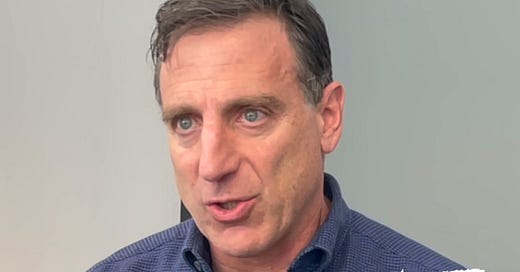A few years ago, Alan Cohen, co-founder and chief product officer of Centivo, became aware of a troubling trend before most of us did: more and more working Americans with health insurance were either not getting the care they needed, or they were going into debt if they did. The reason: high-deductible health plans, which my former colleagues in the insurance business had skillfully – and euphemistically – marketed to the nation’s employers as “consumer-driven health care.”
Within a few years, most of America’s employers had bought what the insurance industry was aggressively selling. As a consequence, millions of families with as little as $500 in the bank soon faced having to pay hundreds and often thousands of dollars out of their own pockets every year before their coverage kicked in. By paying fewer claims, insurers were posting record profits while more and more working families were pushed into the ranks of the functionally uninsured – and into debt. A lasting legacy of the “consumerism movement” in health care, championed by Big Insurance: More than 100 million Americans, most of whom have health insurance cards in their wallets, are now saddled with medical debt.
What Cohen observed was – and still is – prevalent in the health insurance business: policies that are simultaneously increasing in price and decreasing in value–year after year after year. With this in mind, he set out to create a high-value solution for employers that provides employees and their dependents access to high-quality providers and minimizes and often eliminates out-of-pocket requirements. The result is New York-based Centivo, which describes itself as “an innovative health plan for self-funded employers founded on the belief that everyone deserves quality care at a price they can afford.”
Health care runs through Cohen’s bloodline in a way that few families can claim. His father was a doctor and his mother was a nurse. An uncle was a doctor, an aunt was a nurse who married a pharmacist and another aunt was a speech therapist who married a doctor. “So I come from a place where I understand the importance of health care,” he said in a recent interview.
A self-professed “lifelong learner,” Cohen has a master’s degree in business administration from Columbia University and nearly completed a master’s in public health from Johns Hopkins University. That latter experience, although unfinished, is what has proved to be most useful in his long career. “Nobody on the payer side has a master’s in public health,” he said. “I use it every single day.”
The following interview with Cohen was edited for space and clarity.
What happened in your career path that led you to Centivo?
I started at Prudential, Cigna and Mass Mutual selling and servicing clients and running teams. And then I started what was really the first generation web-based benefits technology company in 1996 called OnlineBenefits. We built a technology system that helped companies manage their employee benefits. I had learned from working on the payer side, for example, that clients struggled with managing enrollment forms they had to fill out that. I saw a lot of problems with “administrivia.” That company grew nicely for 10 years and ended up as the largest provider in the small- and medium-sized business space. Then I started another company called Liazon, which was the first private exchange company. This was before the Affordable Care Act. I actually spent time going around talking to congressional staffers and showed how we had built a shopping mall for benefits in the form of a private exchange. What we were trying to do was force the carriers (insurers and third-party administrators) to make products that people want to buy, not products that HR people want to buy.
Can you tell looking back as to whether the employees you served made the right decisions?
At the core of what we were doing at Liazon was actually about decision support. You have to help people understand that it’s not that you're going to have eight office visits, one hospitalization and one surgery. Everyone’s going to have a range of possibilities and needs. ur system got information from the individual to help them figure out which plan made the most sense for them. And we provided information they could understand that explained coverage terms and the tradeoffs associated with out-of-pocket costs. And so we had pretty robust decision support built in. One of the ways in which we comforted ourselves on whether people made the right decisions was whether they changed plans in the next year. Seventy percent of the people in our private exchange chose a plan that was dissimilar to the one they had before. You make a better product at a better price, and people will buy it.
Who are some of your Centivo customers and what are your expectations?
We’re health plan administrator, not an insurance company, but we compete with United, Cigna, Aetna, Blue Cross and Humana. And why we put emphasis on health plan administrator–as opposed to third-party administrator, which is the more typical term–is that we build our own proprietary networks. We have our own point of view on plan design and how the plan should work like a primary care-based program, our own point of view on exactly what utilization management should be like, pre-certification and second surgical review. We have a very informed point of view because we work with our health care partners on it, and in that way, we think of ourselves as a health plan and not just administrator. We’ve alreadydoubled in size and we will double in size again this year. It’s now been five years, and we’ve expanded to numerous markets.
We have essentially two different customers that we target: One is Fortune 500 companies that are household names, and we’ve had some great success with them. The other part of our business is small and mid-market companies with between 50 and a few thousand employees that are less able to access good solutions. Those are organizations that need the kind of things that we do the most.
Can you give an example of an employer that you’re working with, what the experience has been as well as their savings?
We did a study on a group of clients of ours that have been with us for at least two years with 10,000 members, which is statistically significant. We had rock-solid claims information before they joined us. In this industry, especially with smaller customers, you don’t always get rock-solid claims information. So we approached it like a true research project. We wanted clients between 50 and 1,000 employees because we knew that was the heart of the market, and then which of those clients did we have real verified claims experience so that we really could do a comparison. What happened was our financial savings for that group of clients from one year to the next was a 36% reduction in total cost. Even more interesting, 29% of that reduction accrued to the employer, while employees saved the other 7%, but from a member perspective, the cost share went down by 72%. At the same time, we drove up primary care usage significantly, while specialist utilization, emergency care and urgent care went down. Interesting on hospitalization, the days per stay went up. We reduced one-night stays. What we’re doing now, working with our partners in the provider community, is moving down the path to a true pay-for-value approach as opposed to a pay-for-usage approach.
Accountable care organizations (ACOs) that are primary care-based seem to show the most promise for saving money and providing better access. Can you elaborate on that?
Some Medicare-based and commercial clinically integrated network ACOs have done really well and grown their membership. Some of the harbingers of success are focused on primary care, which needs to be the front door to a well-functioning health care system. There are a lot of physicians who are excellent primary care providers, but what’s more important is to think about a team-based approach to patient-centered medical care. That’s what we are demanding of the health care system. Two great metrics are diabetes and hypertension control. Our country has a dual epidemic of diabetes and hypertension. Both conditions often coexist in a person. For the good clinically integrated networks of 100,000-plus Medicare beneficiaries, their hypertension control is over 95% and their diabetic control is in the 90% range as well. They’re controlling them in stunningly good ways, while the average commercial PPO is 50% with the average person age 40, and so primary care is very important.














Share this post